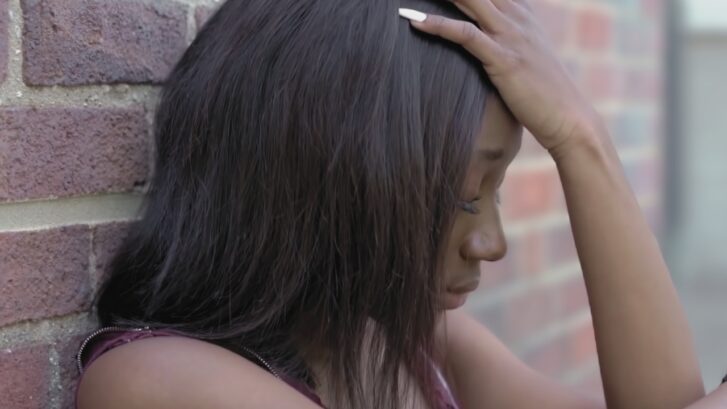Attachment styles, formed in early childhood, profoundly shape how we connect with others in adulthood. These styles, categorized as secure, anxious, avoidant, and disorganized, influence our approach to relationships, affecting everything from how we communicate to how we deal with conflict.
Understanding your attachment style can offer insights into your relationship patterns, helping you navigate the complexities of intimacy and connection. We will provide more details about this topic in the following sections.
4 Most Common Types of Attachment
The first step is to learn more about different formats and how they can affect people, and their ability to connect with others, but also about the impact on various aspects of life, including the relationship, career, and more.
This is part of advanced studies. Psychologists are actively working on finding new discoveries and explaining what triggers people to form any form of attachment.
Being aware that a certain type of attachment can cause some social issues is important for social workers. If you are interested in studying in this field, check out https://studyonline.canberra.edu.au/online-courses/master-of-social-work.
1. Secure Attachment
Individuals with a secure attachment style tend to have a positive view of themselves and their relationships. They are comfortable with intimacy and independence, balancing the two in a healthy way.
Securely attached people are often empathetic and supportive, able to communicate their needs and listen to others. However, for those who grapple with adult attachment issues rooted in childhood trauma, this balance can be more challenging to achieve. They may find it difficult to trust and may struggle with intimacy, requiring additional understanding and support in their journey toward healthier connections.
This attachment style is rooted in consistent and responsive caregiving in childhood, leading to trust in themselves and others. In adult relationships, they are likely to be reliable, warm, and loving partners, fostering strong, stable connections.
2. Anxious Attachment
Those with an anxious attachment style often experience a negative view of themselves while usually valuing and craving closeness with others. They may have a heightened sensitivity to their partner’s moods and actions, fearing rejection or abandonment.
This can lead to behaviors such as needing constant reassurance and struggling with jealousy or possessiveness. Anxious attachment is typically the result of inconsistent caregiving, where the child feels unsure about receiving love and attention.
In adult relationships, they might require more validation and may become clingy or overly dependent on their partners to feel secure.
3. Avoidant Attachment
Individuals with an avoidant attachment style usually maintain a distance from others, valuing independence over intimacy. They often have a positive view of themselves but a distrustful view of others, believing that they do not need close relationships to be happy.
This style can stem from caregivers who were emotionally unavailable or rejecting, leading the child to adapt by taking care of themselves. In relationships, avoidant individuals may seem aloof or uninterested in getting close, often avoiding deep emotional connections and pulling away when things get too intimate.
4. Disorganized Attachment
Disorganized attachment is characterized by a lack of clear strategy in forming close relationships. Individuals with this style often display a mix of behaviors associated with both anxious and avoidant styles, leading to confusion and inconsistency in their interactions.
This attachment can develop in a context of trauma or abuse, where the caregiver is both a source of comfort and fear. In adult relationships, those with a disorganized attachment might struggle with trust, have difficulty managing emotions, and find it hard to form secure, stable connections.
They may oscillate between seeking closeness and pushing it away, reflecting their inner conflict and uncertainty about intimacy.
How It Can Affect the Relationship?
Secure attachment often leads to the healthiest and most fulfilling relationships. Positively, individuals with this style tend to create a supportive and loving environment. They communicate effectively, expressing their needs and listening to their partners.
This fosters a strong foundation of trust and mutual respect, essential for any long-term relationship. Securely attached individuals are also good at managing conflict, approaching disagreements with the intent to understand and resolve rather than win.
Individuals with an anxious attachment style are often very attuned to the emotional states and needs of their partners. They can be extremely caring, passionate, and committed, going to great lengths to please their partners and keep the relationship strong. Their sensitivity to relationship dynamics can make them attentive and responsive partners.
However, the negative aspects include a tendency towards neediness, clinginess, and a fear of abandonment, which can put a strain on relationships. Their constant need for reassurance may become overwhelming for their partners, leading to a cycle of dependency that stifles both parties. Anxious individuals might also struggle with trust issues, seeing threats to the relationship where none exist, potentially causing unnecessary conflict and stress.
Avoidant attachment brings a level of independence to relationships that can be positive, allowing for personal space and individual growth. Their self-sufficiency can be attractive to partners who value autonomy and personal freedom.
However, the negatives often outweigh these positives, as avoidant individuals struggle with intimacy and closeness, which are crucial for a deep and meaningful connection.
They may appear aloof or emotionally distant, making their partners feel neglected or unloved. Their tendency to pull away at signs of closeness can create a push-pull dynamic in the relationship, leading to confusion and unhappiness.
The disorganized attachment style can manifest in unpredictable ways, making these individuals difficult to understand and connect with on a consistent basis. On one hand, their fluctuating between anxious and avoidant behaviors means they can occasionally form close, meaningful connections, showing vulnerability and a desire for intimacy.
On the negative side, the lack of a coherent strategy for dealing with closeness and distance creates a chaotic relationship environment. Their partners may feel bewildered by their unpredictable reactions and the mixed signals they send. Trust can be hard to establish, as disorganized individuals may swing between being overly clingy and distant without much warning.
The Bottom Line
Our attachment style tells us a lot about how we relate to others, and what we can do to improve. It helps us be more caring and understanding with our partners, and have happier and healthier relationships.
We need to know the good and bad sides of our attachment style, and how we can change for the better. People with secure attachments can use their strengths to help and lift up their partners. People with anxious, avoidant, or disorganized attachments can heal and grow, and become more secure over time. This journey takes time, honesty, and sometimes, the help of a therapist.
Related Posts:
- How to Deal with Peer Pressure as an Adult? Be Your…
- Gender Roles and Their Impact on Depression: Beyond…
- What’s the Difference Between a Psychologist and a…
- Dreaming of Birds: What Do They Symbolize and How to…
- High Functioning Bipolar Disorder - How It Affects…
- Understanding and Dealing with Survivor’s Guilt

















